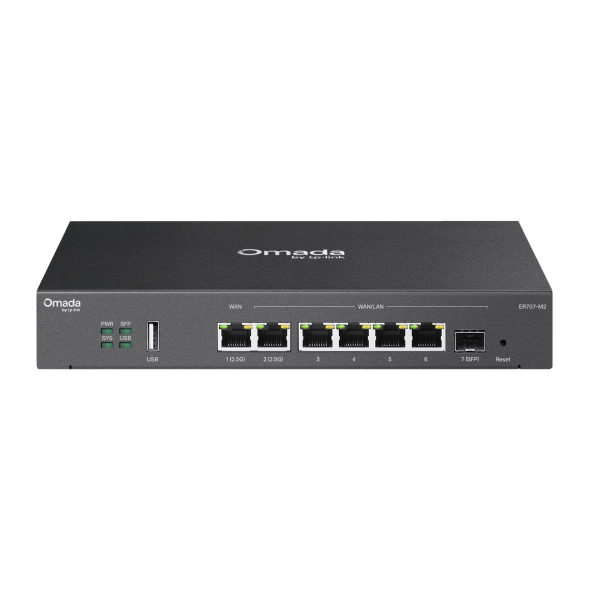Troubleshooting for poor speed test results on Omada Gateways
Objective
Speed test results have been a key concern of users. Improper configuration may lead to unsatisfactory test results. This article will provide troubleshooting methods to address the poor speed test results.
Requirements
- Omada Gateway
- Omada Controller (Software Controller / Hardware Controller / Cloud-Based Controller, v5.9 and above)
Introduction
Unsatisfactory network speed test results of Omada Gateways are usually caused by improper configuration, such as unreasonable Bandwidth Control, QoS, Flow Control, or Rate Limit. Check your network configuration through the following steps.
Troubleshooting Steps
Step 1. Check the link bandwidth.
1) Check the bandwidth of the entire link to see whether the link speeds of the ISP, Modem, Gateway, Switch, and PC are at the highest. Go to Site > Devices and click the corresponding device to check the link speed of each port.

2) Check whether the speed of each link is the same. If not, the tested speed will likely be lower from high bandwidth to low bandwidth. Go to Site > Devices, click the corresponding device, and go to the Ports tab. Click the Edit icon of the corresponding port and enable Flow Control. After applying the configuration, compare the tested speed with the previous one to see if there is any improvement.


3) When there is a wireless link in the network, negotiate the wireless rate to the maximum and choose the channel with less interference. Refer to Troubleshooting of wireless issues for Omada EAP products for wireless speed optimization.
Note: Wireless speed test results are highly dependent on the environment. The wireless signal strength, signal interference, and the device's performance can all impact the speed test results.
Step2. Check the bandwidth control of the device.
The bandwidth of the Gateway can be configured through Bandwidth Control and QoS, and the bandwidth of the Switch can be configured through Rate Limit and QoS. Rate Limit is also used to configure the bandwidth for the SSID and Client of the EAP. Try to disable or delete the related configurations and conduct the speed test again.
Step3. Check the status of the device.
1) Make sure the CPU utilization rate is lower than 80%. Otherwise, you need to check whether any network loop exists.
2) Make sure the software version is the latest one. Log in to the official website (https://www.tp-link.com/business-networking/omada-router-wired-router/) to check the version.
3) Reset the Modem, Gateway, Switch, and EAP when necessary.
Step 4. Check the speed test method
1) When using Speedtest, try different nodes and prioritize nearby nodes to test the speed. The algorithm differences of nodes may lead to a big gap in the speed test results.
2) When using iperf3, use the -P [nums] parameter to specify multiple streams to achieve more stable results.
3) Close other applications that may consume network bandwidth to get more accurate results.
Step 5. Confirm the upstream and downstream bandwidth provided by the ISP.
When you are testing the speed of an internet node, such as using Speedtest, the upper limit of the rate is the bandwidth provided by the ISP.
Conclusion
Follow the above steps to troubleshoot the problem. If the speed test result remains unsatisfying, collect the information of your network topology, controller configurations, and ISP bandwidth, and ask TP-Link Technical Support for help.
Get to know more details of each function and configuration please go to Download Center to download the manual of your product.
Is this faq useful?
Your feedback helps improve this site.
TP-Link Community
Still need help? Search for answers, ask questions, and get help from TP-Link experts and other users around the world.


